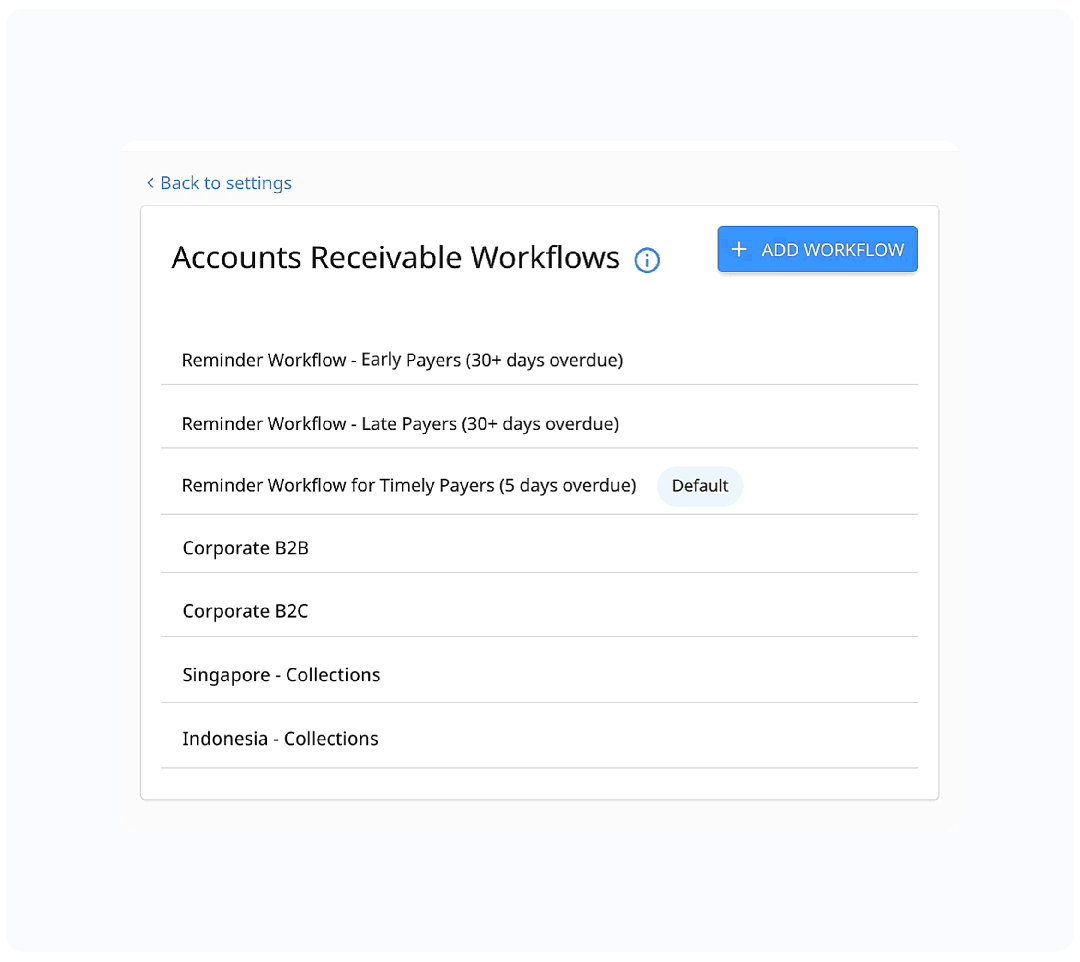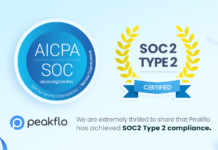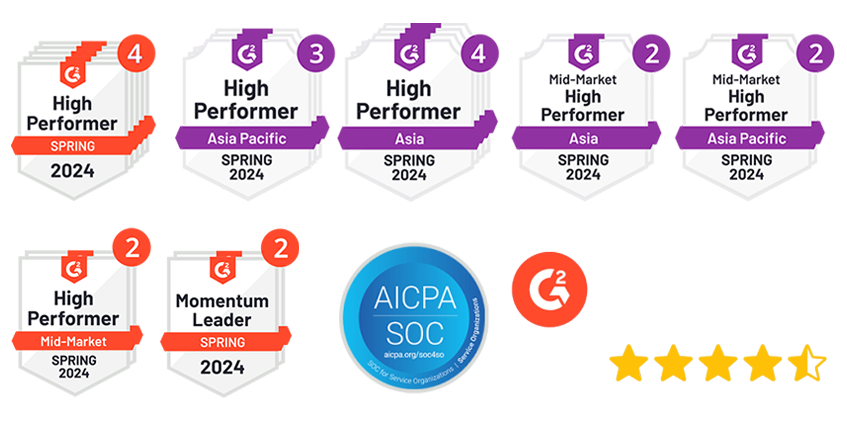For large businesses, managing cash flow is not always easy. Two key processes that affect cash flow are accounts payable (AP) and accounts receivable (AR). It’s important to understand the difference between accounts payable and receivable to keep your finances in order.
In this blog, we’ll break down the differences between accounts payable and accounts receivable, explain how they affect your cash flow, and give you tips on managing them better. Whether you want to speed up payments or reduce overdue debts, understanding these processes is key to running a successful business.
What is Accounts Payable?
Accounts payable (AP) is the money a company owes to its vendors for goods or services it has received but hasn’t paid for yet. It’s a type of liability, meaning it’s a debt the business needs to settle soon.
For example, imagine your company orders 100 computers from a supplier. The supplier delivers the computers and sends an invoice for $10,000. Your business now has a $10,000 accounts payable. You don’t pay the supplier right away, but you need to settle the amount within 30 days.
In this case, the $10,000 you owe is an accounts payable. It’s not money you’ve spent yet, but you must pay it within a certain time to avoid late fees or damaging your relationship with the supplier.
Managing accounts payable is important because it helps your business keep track of who you owe money to and when payments are due. Timely payments can help you build trust with your vendors and avoid late charges.
What is Accounts Receivable?
Accounts receivable (AR) is an asset account representing money a customer owes your business for products or services already delivered.
For example, let’s say your company provides marketing services to a client. After completing a project, you send the client an invoice for $5,000, with payment due in 30 days. Until the client pays, this $5,000 is your accounts receivable. It’s money you expect to receive soon, but it hasn’t been paid yet.
In this case, accounts receivable are important for tracking how much money you’re owed and ensuring you receive payments on time. Efficiently managing AR can help maintain a healthy cash flow and prevent overdue payments.
Now that we’ve covered the basics of both accounts payable and accounts receivable, let’s explore the key differences between AP and AR and see how each affects your business’s cash flow and overall financial health.
Key Differences Between Accounts Payable and Accounts Receivable
Understanding the difference between accounts payable and receivable is important for managing your company’s finances effectively. While both terms deal with money coming in and going out of your business, they represent opposite sides of the financial equation. Here are the key distinctions:
1. Definition
Accounts Payable, as you already know, refers to the money your business owes to vendors and suppliers for goods or services you’ve received but haven’t yet paid for. It’s considered a liability.
Accounts Receivable, on the other hand, is the money customers owe your business for goods or services you’ve already delivered. It’s considered an asset.
2. Impact on Cash Flow
Accounts Payable affects your outgoing cash flow. Delays in paying your vendors can create cash flow issues.
Accounts Receivable affect your incoming cash flow. If customers delay payments, it can reduce the money you have on hand.
3. Financial Statement Placement
Accounts Payable appears on your balance sheet as a liability, meaning it’s money your business needs to pay.
Accounts Receivable appear as an asset on your balance sheet, representing money you expect to receive.
4. Timeline for Payment
Accounts Payable is typically due within a short time frame, often 30 to 60 days, depending on vendor terms.
Accounts Receivable are also expected to be collected within a set time frame, usually 30 to 90 days, based on your credit terms with customers.
5. Effect on Business Relationships
Accounts Payable impacts your relationship with suppliers. Late payments can hurt trust, potentially affecting your ability to negotiate better terms or secure future supplies.
Accounts Receivable affect customer relationships. Late payments can strain trust and potentially harm future sales or lead to credit limitations.
Accounts Payable vs Accounts Receivable
To put it simply, accounts payable vs accounts receivable are two sides of the financial coin. One deals with the money your business owes, while the other tracks the money you’re owed. Below is a quick comparison to help you better understand the key differences between these two important financial processes.
Want a quick refresher? Here’s AP vs AR in a side-by-side view.
| Criteria | Accounts Payable (AP) | Accounts Receivable (AR) |
| Definition | The money your business owes to suppliers/vendors. | Money owed to your business by customers. |
| Financial Statement | Appears as a liability on the balance sheet. | Appears as an asset on the balance sheet. |
| Cash Flow Impact | Affects outgoing cash flow. | Affects incoming cash flow. |
| Payment Terms | Typically due within 30-60 days. | Typically due within 30-90 days. |
| Business Impact | Late payments can harm supplier relationships. | Delays in payments can hurt cash flow and customer trust. |
| Focus | Paying off short-term debts. | Collecting money owed for delivered services/goods. |
By understanding the key differences between AP and AR, you can better manage your cash flow, avoid late payments, and improve relationships with both your suppliers and customers.
Let’s see how managing these two processes effectively can directly impact your business’s financial health.
How do Accounts Payable and Accounts Receivable Affect Financial Health?
Accounts payable and receivable are key to your company’s financial health. Manage them well, and your business thrives. Handle them poorly, and cash flow problems follow.
1. Accounts Payable and Cash Flow
When your business owes money to vendors and suppliers, it’s reflected in your accounts payable. If you don’t manage it well, paying bills too late can lead to late fees, strained relationships with vendors, and even disruptions in your supply chain.
Example: A manufacturing company might delay payments to a supplier for raw materials. With time, their vendors might stop sending materials, causing production delays and missed sales.
However, managing accounts payable carefully can help your business take advantage of early payment discounts or favorable terms with suppliers, boosting your cash flow. Keeping these payments under control means you’ll have more flexibility with your money when it’s needed.
2. Accounts Receivable and Liquidity
Accounts receivable play a necessary role in your company’s liquidity. The quicker you can collect money from customers, the stronger your cash flow will be.
Example: ABC company provides IT consulting services to a large client and invoices them $15,000. If the client delays payment beyond the agreed-upon terms, it could leave ABC without enough cash to pay its bills, including accounts payable. In this case, overdue receivables hurt their liquidity and create financial stress.
On the other hand, a well-managed accounts receivable process can help keep your cash flow steady and reduce the risk of cash shortages. You can speed up payments by offering incentives like discounts for early payment or using automated invoicing systems to send reminders to customers. This ensures that money comes in when it’s expected, allowing your business to maintain a healthy working capital.
3. Balancing Both for Financial Stability
The true financial health of your business lies in how well you balance accounts payable vs accounts receivable. If you’re paying suppliers faster than you’re collecting payments from customers, your cash flow could suffer.
For instance, if your accounts receivable are slow but you still pay your suppliers on time, you might end up with cash shortages, making it difficult to meet both operational and strategic goals.
By aligning both processes of managing payables and receivables effectively, you can create a stable financial environment.
Now that you understand how accounts payable vs accounts receivable directly impact your financial health, it’s time to learn the best practices for managing both to ensure smooth cash flow and a stronger financial foundation.
Best Practices for Managing Accounts Payable and Accounts Receivable
Effectively managing accounts payable vs accounts receivable can help improve cash flow, reduce financial stress, and keep your business running smoothly. Let’s look at some best practices for both, along with some examples to make them easier to understand.
Best Practices for Managing Accounts Payable
Late payments to vendors and suppliers can damage relationships and create unnecessary stress. With the right best practices for managing accounts payable, you can stay on top of your bills, avoid penalties, and maintain positive supplier partnerships while protecting your cash flow.
1. Set Clear Payment Terms
Establish clear payment terms with your vendors and suppliers from the start. This will help you avoid confusion and late payments.
Example: If you agree on a 30-day payment term with a supplier, make sure you stick to that. This builds trust and ensures you maintain a healthy relationship.
2. Prioritize Payments
Organize your bills and prioritize payments based on due dates. Always pay the most urgent ones first, such as those with the earliest deadlines or any that offer discounts for early payment.
Example: A supplier offers a 5% discount for paying within 10 days; it’s a good idea to take advantage of it to save money in the long run.
3. Automate Payments
Use accounting software to automate the payment process. This can help ensure that you never miss a due date, reducing the risk of late fees.
Example: You set up automated payments for regular expenses like utility bills so your business won’t risk missing important payments.
Best Practices for Managing Accounts Receivable
Many businesses struggle with delayed payments, which can hurt cash flow and lead to financial strain. By following best practices for managing accounts receivable, you can ensure smoother and quicker collections, reducing customer payment delays and keeping your business’s finances healthy.
1. Send Invoices Quickly and Accurately
As soon as you deliver a product or service, send the invoice to your customer. The sooner you send the invoice, the sooner you can expect payment.
Example: A freelance graphic designer, after finishing a project, sends the invoice to their client the same day. This helps reduce delays in receiving payment and improves cash flow.
2. Follow Up on Overdue Payments
Sometimes, customers forget or delay payments. It’s important to follow up regularly on overdue invoices to ensure timely collections.
Example: If a customer hasn’t paid after 30 days, send a polite reminder email. If it goes beyond 60 days, a more direct follow-up might be needed.
3. Offer Early Payment Discounts
Encourage customers to pay sooner by offering small discounts for early payments.
Example: If your usual payment terms are 30 days, offer a 2% discount if the customer pays within 10 days. This can motivate customers to settle their bills faster, improving your cash flow.
4. Use Electronic Payment Methods
Make it easy for customers to pay by offering multiple payment options, such as credit card payments, online transfers, or digital wallets. The easier it is for customers to pay, the quicker you’ll receive the funds.
Tip: Provide an online payment link in your invoice; customers are more likely to pay faster rather than having to check their mail.
How Peakflo Can Help with Accounts Payable vs Accounts Receivable
Managing AP and AR isn’t easy. You need to juggle workflows, different payment terms, and many vendor or customer relationships at once. Peakflo provides the tools and features you need to efficiently streamline both processes, ensuring smoother operations and better financial oversight.
How Peakflo Can Help with Accounts Payable
Managing Accounts Payable (AP) can be complex, especially when dealing with vendor payments, varying payment terms, and approval workflows. Peakflo streamlines the AP process, helping businesses stay on top of payments and maintain a healthy cash flow. Here’s how:

1. Automate Invoice Capture: Peakflo’s AI-powered OCR captures every invoice detail with ease—no more manual data entry.
2. Streamline Approvals: Set up custom approval workflows to get invoices approved faster and without delays.
3. Simplify Purchase Order Matching: Automatically match POs, invoices, and receipts to reduce payment errors and avoid fraud.
4. Accelerate Payments and Reconciliations: Automate vendor payments and bank reconciliations to save time and close books faster.
5. Manage Vendors Easily: Onboard and manage vendor data through a secure, self-serve portal—no email back-and-forth.
6. Enable Smart Vendor Communication: Use Peakflo’s WhatsApp vendor portal for quick updates, invoice submission, and payment status.
7. Speed Up Vendor Reconciliation: Use AI to match and reconcile vendor statements, reducing hours of manual work.
8. Track Budgets in Real-Time: Avoid overspending by tracking and managing budgets in one centralized platform.
How Peakflo Can Help with Accounts Receivable
Managing accounts receivable involves handling customer payments, tracking outstanding balances, and resolving payment disputes. Peakflo offers comprehensive tools to manage AR and improve cash flow. Here’s how:

1. Simplify Proforma Invoice Validation: Get client confirmation faster with an easy, streamlined proforma invoice validation process.
2. Create Custom E-Invoices: Build e-invoices effortlessly with custom fields that match your unique business needs.
3. Manage Customer Relationships with a Finance CRM: Centralize conversations and client interactions to speed up collections and strengthen relationships.
4. Accelerate Payments with Automated Collections: Send smart, automated payment reminders and dunning emails to reduce overdue invoices and boost cash flow.
5. Offer a Seamless Customer Portal: Give customers a secure portal to view statements, raise disputes, and make payments easily.
6. Access Real-Time, AI-Powered Reports: Gain instant visibility into receivables and make smarter financial decisions with AI-driven insights.
7. Automate Cash Application: Eliminate manual effort by automatically matching payments to invoices, making month-end closing faster.
8. Streamline Account Reconciliation: Speed up your reconciliations with virtual assistant (VA)-powered automation and reduce errors.
By providing automation, real-time tracking, and better collaboration, Peakflo makes managing accounts payable vs accounts receivable far simpler and more organized.
Conclusion
Managing the balance between accounts payable vs accounts receivable can quickly become overwhelming, especially as your business grows. Juggling payments, tracking due dates, and resolving disputes can take a toll on your team’s productivity and your cash flow.
Without the right tools, these tasks often lead to delays, errors, and missed opportunities. By automating the invoicing process, streamlining payment tracking, and improving communication between your accounts payable and accounts receivable teams, Peakflo helps you stay organized and in control of your financial operations.
With Peakflo, you can simplify complex workflows, reduce manual effort, and ensure that your cash flow remains steady. Whether it’s managing vendor payments, sending customer reminders, or tracking invoice statuses in real-time, Peakflo takes the guesswork out of financial management. It’s time to stop letting manual processes slow you down. Take control of your accounts payable and accounts receivable processes and improve your business’s financial efficiency by booking a demo with Peakflo today.










![Why AI Sales Calls Are Making Good Sales Reps Even Better [2025 Guide] ai sales calls](https://blog.peakflo.co/wp-content/uploads/2025/09/65168cf6-3001-4733-8cbc-12d5684cf449-218x150.webp)


































